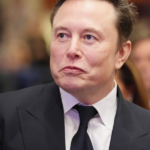“Testing needs to mirror real world situations,” one document said. “The intent of the training is to prep the units for operations by simulating scenarios as closely as possible to the real world situations.”
Citing market research conducted in February by a redacted source, one document said Tesla Cybertrucks are specifically called for in this type of battleground testing because of its “aggressively angular and futuristic design, paired with its unpainted stainless steel exoskeleton,” that differentiates it from other models. The vehicles do not need to be fully operational, but rather be intact and able to move on their wheels, per the document.
According to Gordon Adams, a professor of U.S. foreign policy at American University who researches defense spending, the Air Force’s decision to pursue Tesla vehicles for battlefield training is, in isolation, of little consequence—but it is indicative of the growing ties between the U.S. military and private sector tech.
“At one level, I don’t see it as terribly unusual for them to seek to use a Tesla truck as a target set,” Adams told Fortune. “At another level, I find it symbolic of an evolving relationship between, in general, the high-tech sector and the Department of Defense.”
“I have no doubt that this is something of the camel’s nose under the tent with respect to the relationship between DOD and [Tesla CEO] Elon Musk and his businesses, of which there are many connections,” he added.
The Air Force and Tesla did not respond to Fortune’s requests for comment.
The enmeshing of Big Tech and the Pentagon is unlikely to unravel any time soon as the ballooning demand from the military for innovative technology creates a “whole new sector,” Adams said.
“If you wanted to put the brakes on technology developments and take a close look at them under this political situation—the distribution of power between Republicans and Democrats—that’s really not going to happen. The door is pretty open to the interpenetration of high tech and the Defense Department.”









